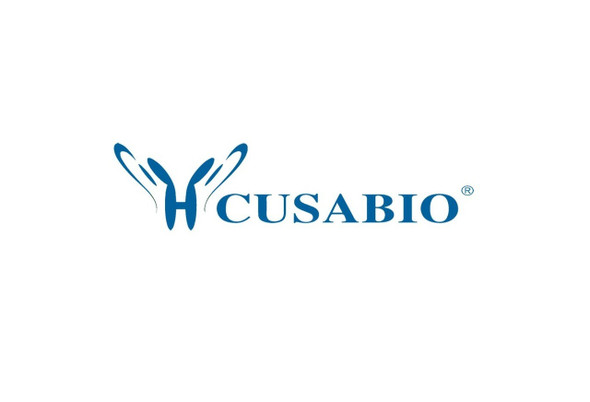Cusabio Human Recombinants
Recombinant Human Potassium-transporting ATPase subunit beta (ATP4B), partial | CSB-EP002343HU
- SKU:
- CSB-EP002343HU
- Availability:
- 3 - 7 Working Days
Description
Recombinant Human Potassium-transporting ATPase subunit beta (ATP4B), partial | CSB-EP002343HU | Cusabio
Alternative Name(s): Gastric H(+)/K(+) ATPase subunit beta;Proton pump beta chain
Gene Names: ATP4B
Research Areas: Transport
Organism: Homo sapiens (Human)
AA Sequence: CLYVLMQTVDPYTPDYQDQLRSPGVTLRPDVYGEKGLEIVYNVSDNRTWADLTQTLHAFLAGYSPAAQEDSINCTSEQYFFQESFRAPNHTKFSCKFTADMLQNCSGLADPNFGFEEGKPCFIIKMNRIVKFLPSNGSAPRVDCAFLDQPRELGQPLQVKYYPPNGTFSLHYFPYYGKKAQPHYSNPLVAAKLLNIPRNAEVAIVCKVMAEHVTFNNPHDPYEGKVEFKLKIEK
Source: E.coli
Tag Info: N-terminal GST-tagged
Expression Region: 58-291aa
Sequence Info: Extracellular Domain
MW: 53.6 kDa
Purity: Greater than 90% as determined by SDS-PAGE.
Relevance: Required for stabilization and maturation of the catalytic proton pump alpha subunit and may also involved in cell adhesion and establishing epithelial cell polarity.
Reference: The DNA sequence and analysis of human chromosome 13.Dunham A., Matthews L.H., Burton J., Ashurst J.L., Howe K.L., Ashcroft K.J., Beare D.M., Burford D.C., Hunt S.E., Griffiths-Jones S., Jones M.C., Keenan S.J., Oliver K., Scott C.E., Ainscough R., Almeida J.P., Ambrose K.D., Andrews D.T. , Ashwell R.I.S., Babbage A.K., Bagguley C.L., Bailey J., Bannerjee R., Barlow K.F., Bates K., Beasley H., Bird C.P., Bray-Allen S., Brown A.J., Brown J.Y., Burrill W., Carder C., Carter N.P., Chapman J.C., Clamp M.E., Clark S.Y., Clarke G., Clee C.M., Clegg S.C., Cobley V., Collins J.E., Corby N., Coville G.J., Deloukas P., Dhami P., Dunham I., Dunn M., Earthrowl M.E., Ellington A.G., Faulkner L., Frankish A.G., Frankland J., French L., Garner P., Garnett J., Gilbert J.G.R., Gilson C.J., Ghori J., Grafham D.V., Gribble S.M., Griffiths C., Hall R.E., Hammond S., Harley J.L., Hart E.A., Heath P.D., Howden P.J., Huckle E.J., Hunt P.J., Hunt A.R., Johnson C., Johnson D., Kay M., Kimberley A.M., King A., Laird G.K., Langford C.J., Lawlor S., Leongamornlert D.A., Lloyd D.M., Lloyd C., Loveland J.E., Lovell J., Martin S., Mashreghi-Mohammadi M., McLaren S.J., McMurray A., Milne S., Moore M.J.F., Nickerson T., Palmer S.A., Pearce A.V., Peck A.I., Pelan S., Phillimore B., Porter K.M., Rice C.M., Searle S., Sehra H.K., Shownkeen R., Skuce C.D., Smith M., Steward C.A., Sycamore N., Tester J., Thomas D.W., Tracey A., Tromans A., Tubby B., Wall M., Wallis J.M., West A.P., Whitehead S.L., Willey D.L., Wilming L., Wray P.W., Wright M.W., Young L., Coulson A., Durbin R.M., Hubbard T., Sulston J.E., Beck S., Bentley D.R., Rogers J., Ross M.T.Nature 428:522-528(2004)
Storage: The shelf life is related to many factors, storage state, buffer ingredients, storage temperature and the stability of the protein itself. Generally, the shelf life of liquid form is 6 months at -20?/-80?. The shelf life of lyophilized form is 12 months at -20?/-80?.
Notes: Repeated freezing and thawing is not recommended. Store working aliquots at 4? for up to one week.
Function: Required for stabilization and maturation of the catalytic proton pump alpha subunit and may also involved in cell adhesion and establishing epithelial cell polarity.
Involvement in disease:
Subcellular Location: Cell membrane, Single-pass type II membrane protein
Protein Families: X(+)/potassium ATPases subunit beta family
Tissue Specificity:
Paythway: OxidativePhosphorylation
Form: Liquid or Lyophilized powder
Buffer: If the delivery form is liquid, the default storage buffer is Tris/PBS-based buffer, 5%-50% glycerol. If the delivery form is lyophilized powder, the buffer before lyophilization is Tris/PBS-based buffer, 6% Trehalose, pH 8.0.
Reconstitution: We recommend that this vial be briefly centrifuged prior to opening to bring the contents to the bottom. Please reconstitute protein in deionized sterile water to a concentration of 0.1-1.0 mg/mL.We recommend to add 5-50% of glycerol (final concentration) and aliquot for long-term storage at -20?/-80?. Our default final concentration of glycerol is 50%. Customers could use it as reference.
Uniprot ID: P51164
HGNC Database Link: HGNC
UniGene Database Link: UniGene
KEGG Database Link: KEGG
STRING Database Link: STRING
OMIM Database Link: OMIM









